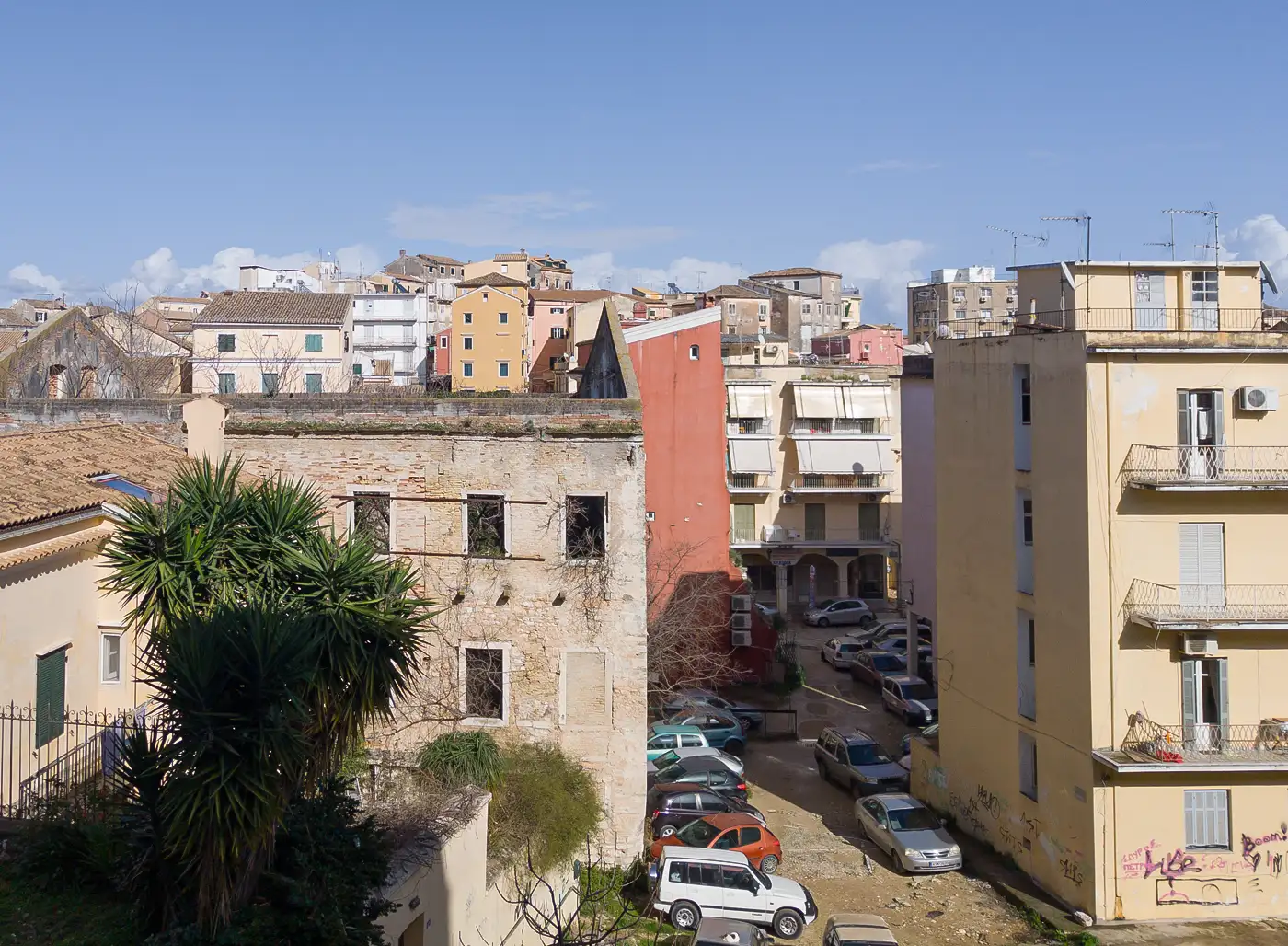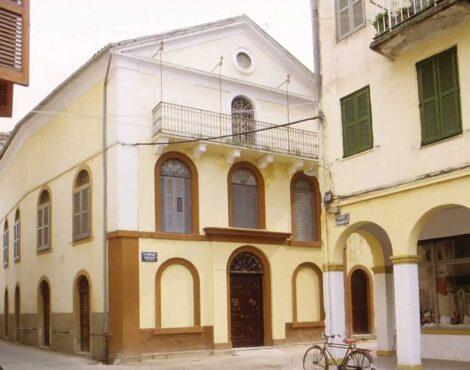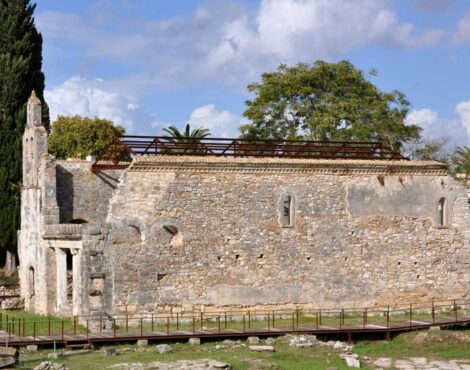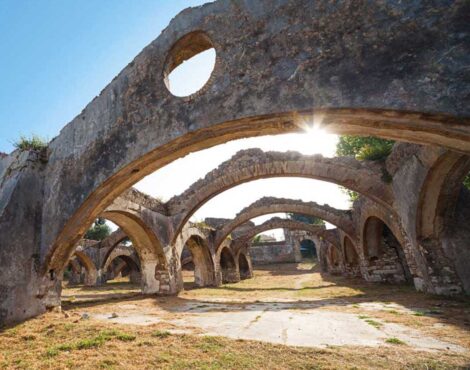The transition from the fortified Old Town of Corfu with its impressive Venetian walls and strategic urban planning to the New Town, which gradually emerged after 1864 when the island was incorporated into the modern Greek state, marks a significant chapter in both the island’s history and the broader evolution of urban space in Greece. This process reflects not only architectural and planning developments, but also the social, political, and cultural transformations that shaped the Ionian Islands in the modern era.
The Old Town of Corfu is one of the best-preserved examples of Venetian urban organization in the Eastern Mediterranean. Not coincidentally, it has been recognized as a UNESCO World Heritage Site since 2007. Largely built and shaped during the period of Venetian rule (1386–1797), the town was designed with a clear military-defensive character. The massive fortresses, the Old Fortress and the New Fortress, dominated the landscape and protected the settlement from frequent invasions and sieges.
The walls of the city formed the main line of defense, enclosing densely built neighborhoods with narrow alleyways (locally known as kantounia), along with public buildings, churches, marketplaces, and residences. The primary aim of this urban structure was not comfort or rational planning, but security and control. This emphasis on defense led to a distinct architectural and social identity, much of which has been preserved to this day. The use of durable building materials (mainly stone), the characteristic loggias, the public squares, and the interconnecting passageways form a unique mosaic influenced by Venice, Naples, and other Mediterranean cities. Up until the mid-19th century, nearly the entire population of Corfu lived within the city walls.
After centuries of foreign rule by Venetians, French, Russians, and British, the Ionian Islands, including Corfu, were unified with the Greek state in 1864. This political shift brought about sweeping changes, not only in governance but also in the social and urban fabric of the island. Corfu’s strategic military value diminished within the framework of the new Greek national territory. As a result, the military fortifications that once defined the town’s life began to be seen as obsolete. Instead of protecting the town, the old walls now restricted its expansion and demographic growth.
By the end of the 19th century, a historic decision was made: the Venetian walls would be demolished to make way for the creation of a New Town, expanding beyond the old fortified boundary and following the urban planning trends of the time. The dismantling of the walls began gradually in the late 19th century and continued into the 20th. The goal was not only spatial expansion but also the aesthetic “liberation” of the town. Although architecturally significant, the Venetian walls were now regarded as impediments to progress and modern development.
The New Town of Corfu began to take shape primarily in the early 20th century. It was organized according to clear urban planning principles: straight roads, larger building blocks, public structures built in neoclassical or eclectic architectural styles, parks, and open squares. The town now bore the features of a modern European urban center, tailored to meet the needs of a growing population and a changing society. The urban fabric extended into areas such as Garitsa, Saroko, and Mantouki. Simultaneously, new neighborhoods were developed to house working-class and middle-class families. Institutions such as hospitals, schools, theaters, and administrative offices also emerged, contributing to the transformation of Corfu into a vibrant urban entity.
Throughout the 20th century, the evolution of the New Town continued, especially with the urban expansions of the 1960s and 1980s. Like many Greek cities, Corfu experienced a phase of rapid development and apartment block construction, which in some cases altered the character of the city. However, the relationship between the Old Town and the New Town remained strong. The Old Town maintained its role as the historical and tourist center, while the New Town became the nucleus of everyday life for the island’s residents, hosting homes, services, public administration, and businesses.
Today, maintaining a balance between these two “worlds” that of the past and that of the present, is a challenge for local government, architects, and urban planners. Efforts are needed to preserve the unique identity of both parts of the city while addressing contemporary needs.





